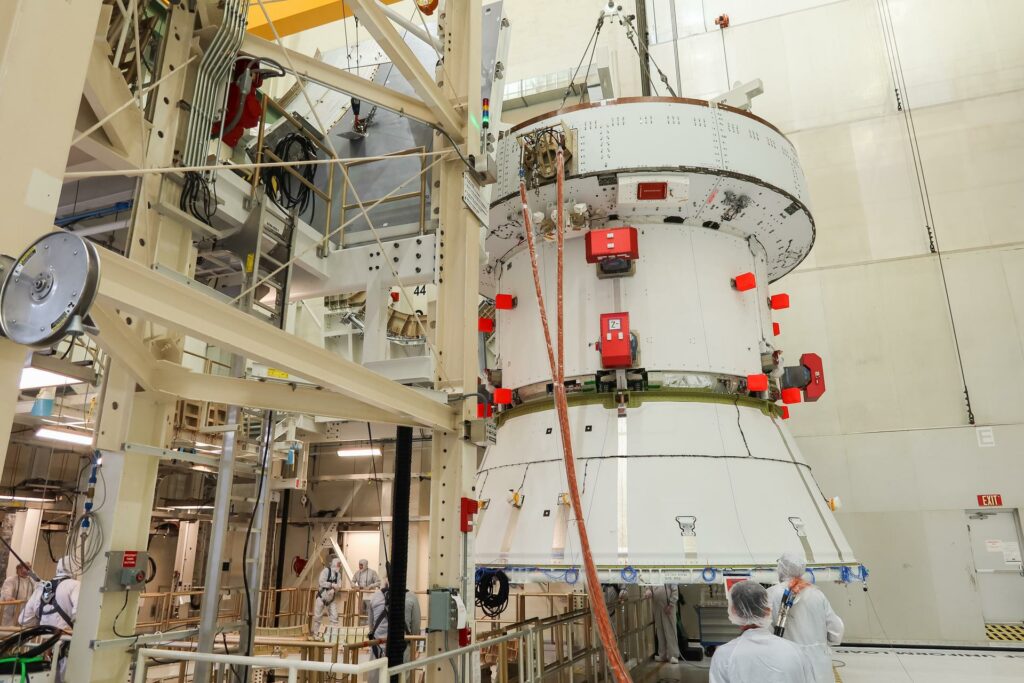
After spending several months undergoing integrated testing and upgrades at Launch Complex 39B at NASA’s Kennedy Space Center, the agency’s mobile launcher 1 is transported inside the Vehicle Assembly Building in preparation for integration of the Artemis II Moon rocket.
The 4.2-mile trek from Launch Pad 39B to the Vehicle Assembly Building along the crawlerway normally takes eight to 12 hours atop NASA’s crawler-transporter 2, though teams paused the roll operations several times as planned to ensure the operation teams had scheduled breaks and rest. The operation resumed at 1:41 a.m. EDT, Friday, Oct. 4.
Standing 380 feet tall, the mobile launcher – which will be used to assemble, process, and launch the SLS (Space Launch System) rocket and Orion spacecraft – contains all the connection lines – known as umbilicals – and ground support equipment that will provide the rocket and spacecraft with the power, communications, fuel, and coolant necessary for launch. This will be the mobile launcher’s last solo trek out to the launch pad ahead of integration of the Artemis Moon rocket, and it will remain inside the Vehicle Assembly Building until it is ready to return to the pad with the rocket for a tanking test.
The Artemis II test flight will be NASA’s first mission with crew under the Artemis campaign, sending NASA astronauts Victor Glover, Christina Koch, and Reid Wiseman, as well as CSA (Canadian Space Agency) astronaut Jeremy Hansen, on a 10-day journey around the Moon and back.



